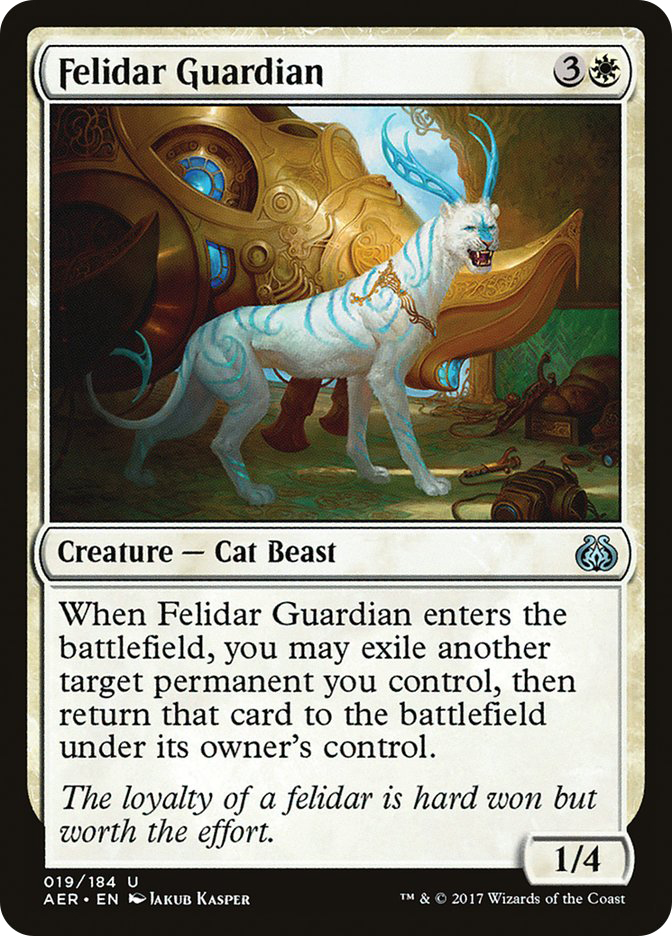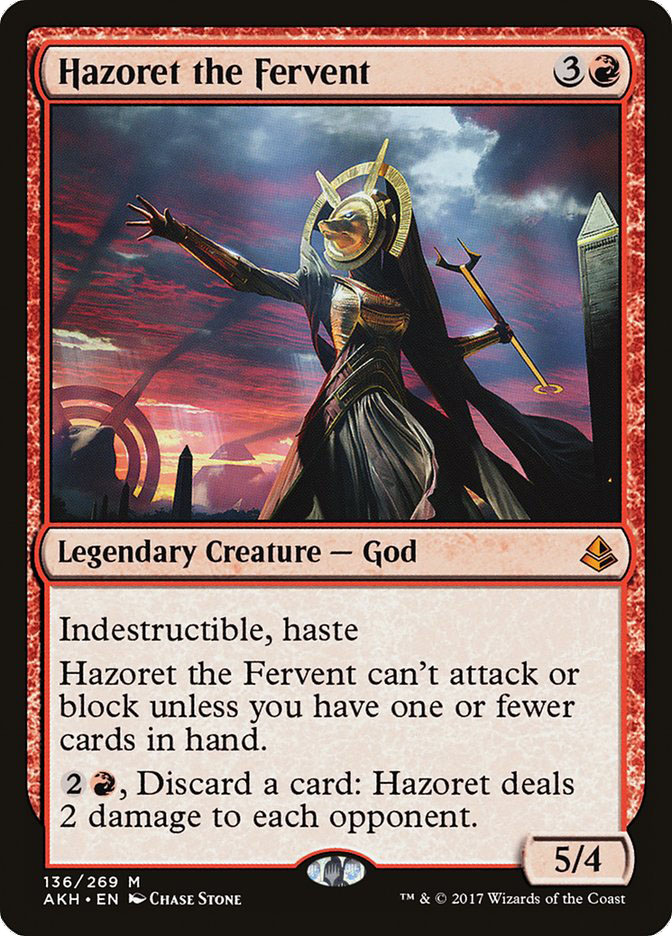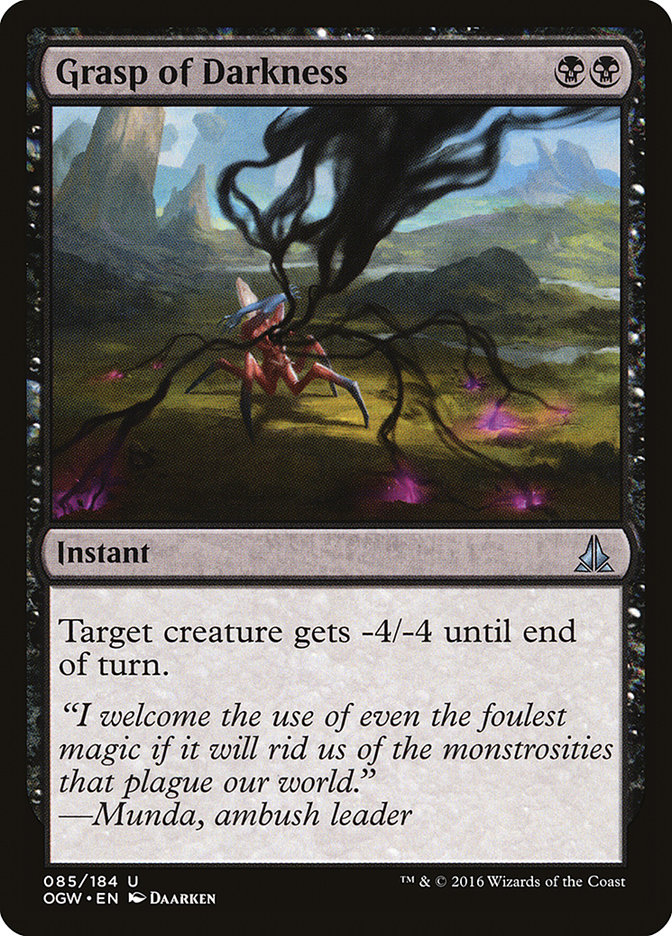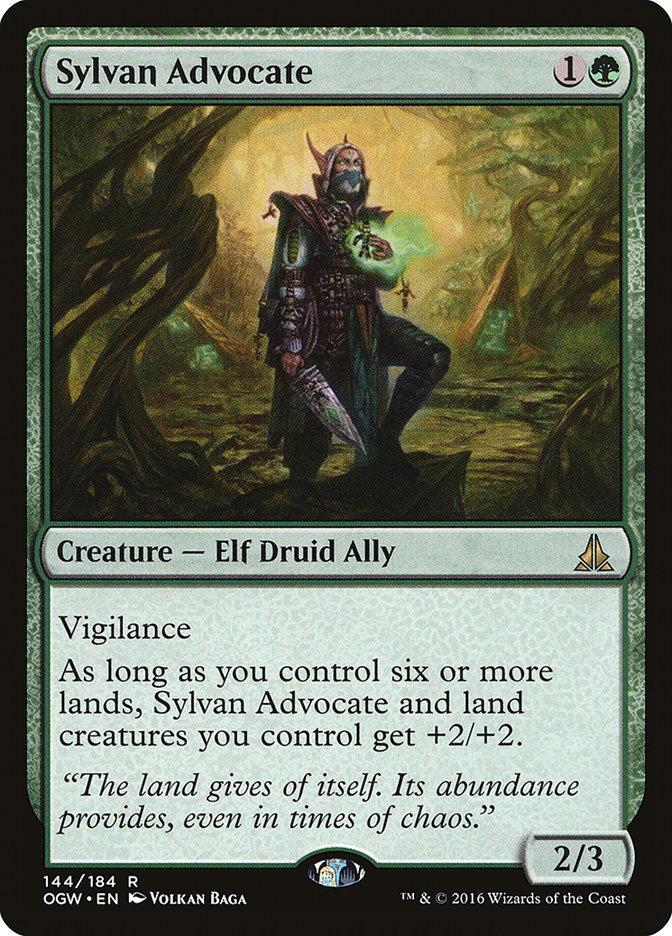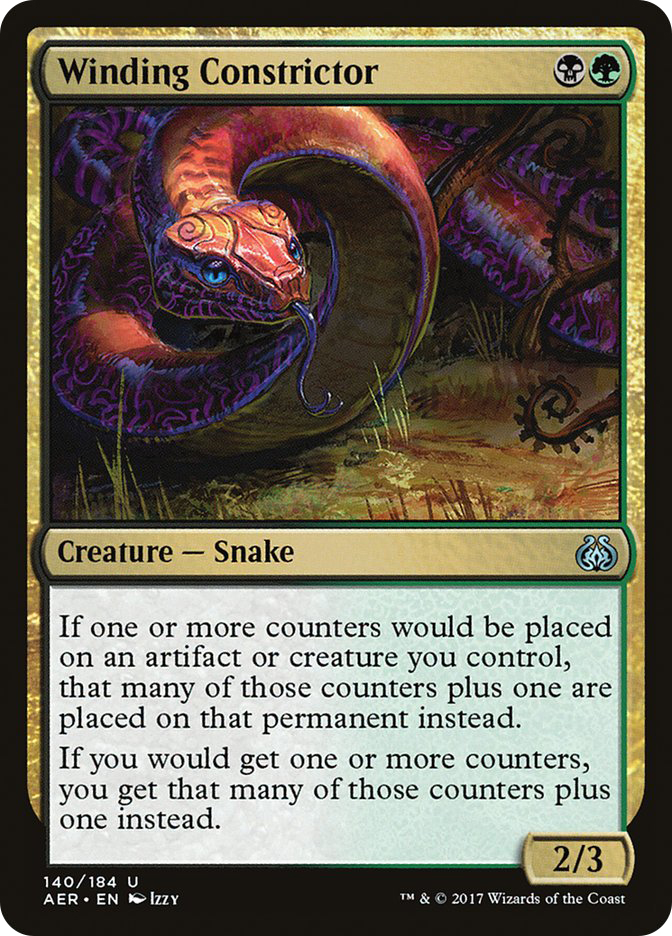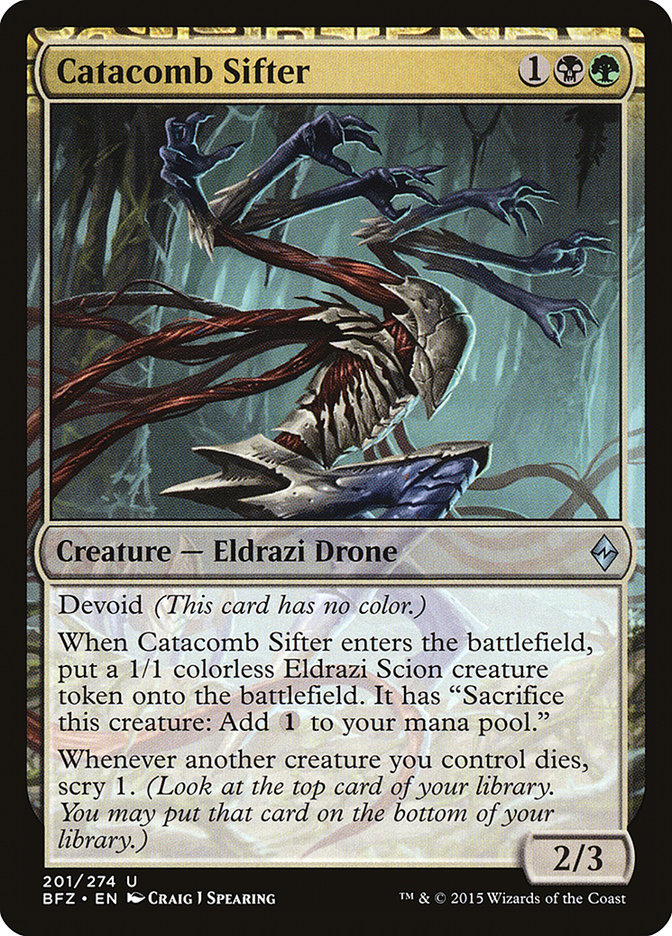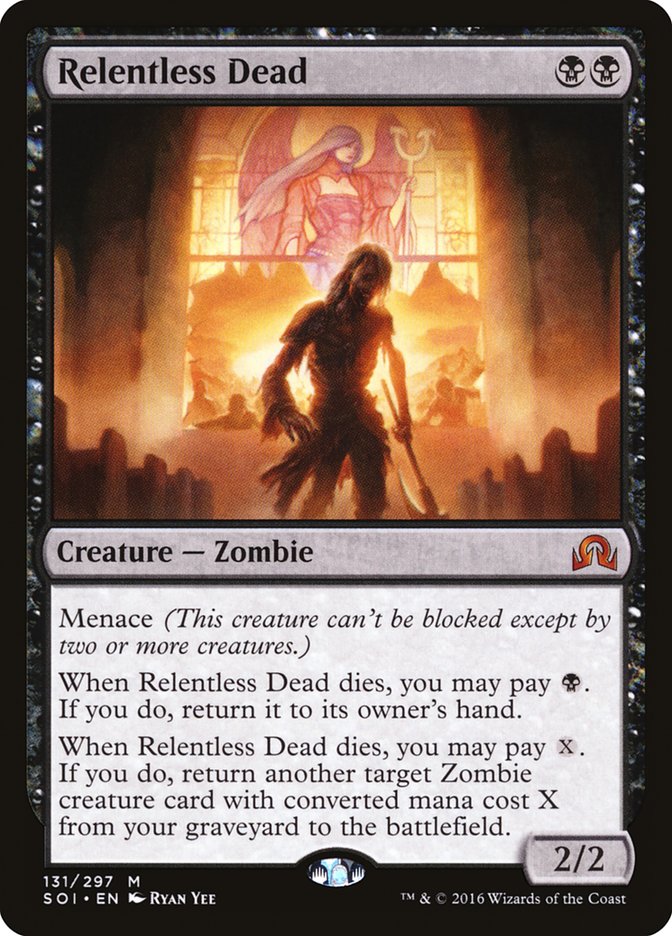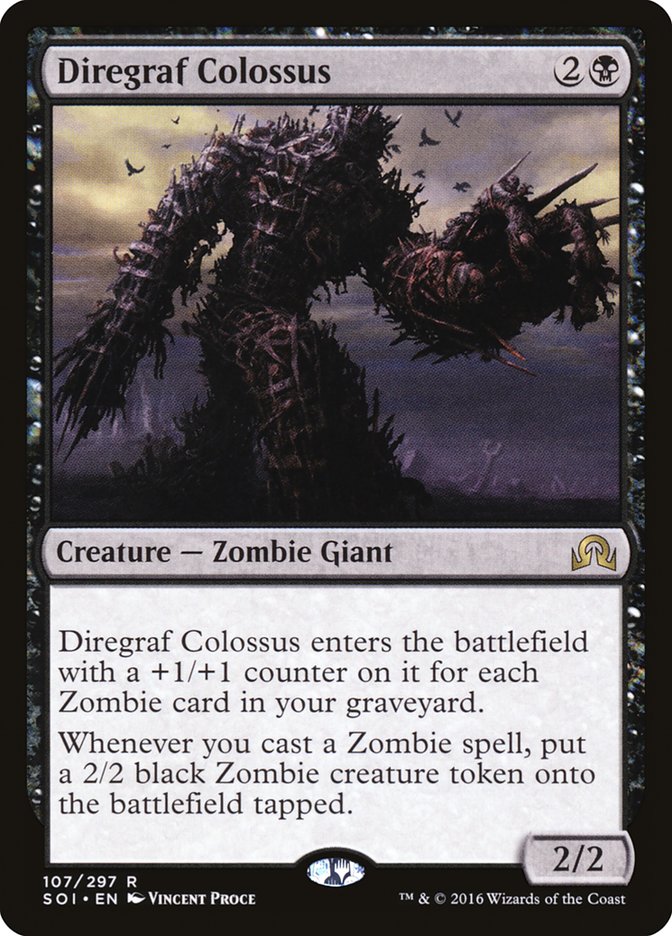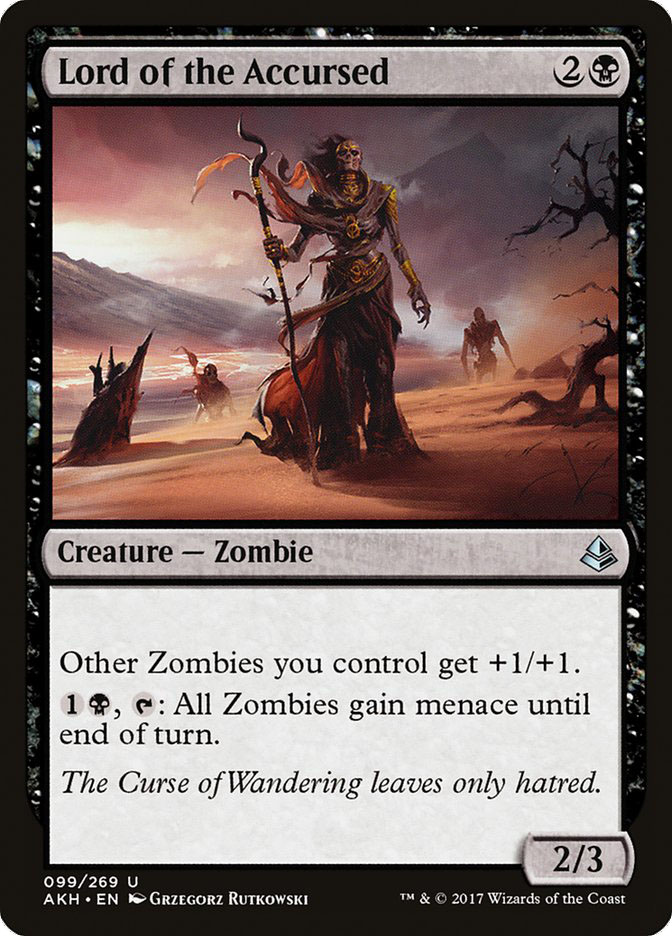We seem to be in an interesting moment in Standard. I was talking about what was happening with some players after Grand Prix Minneapolis, and this seemed to be the consensus:
Red is a great Public Enemy Number One.
From a deckbuilding perspective, working to build a deck that can beat an aggressive red deck, no matter how good that deck is, is a straightforward exercise. You might succeed or fail, but you aren’t going to contort your deck with weird cards to do it. If you have a strange idea for a deck – say, a Bant Aggro deck with Always Watching – you can just be that deck, and not have to worry about tapping down to go aggressive and simply dying the next turn to an arbitrarily large herd of Cats.
When Emrakul, the Promised End or Felidar Guardian was Public Enemy Number One, a kind of pressure existed on what was possible that squeezed the world into a narrow form.
With Hazoret the Fervent as Public Enemy Number One, the only real pressure on players is “don’t mess around.”
A First Stage, A Second Stage, A Third Stage
At the Pro Tour, the top decks I was considering and offering up as “best options” to my friends were Mardu, Ramunap Red, and Temur Control (similar to my SCG Invitational deck). By the end of the Pro Tour, Ramunap Red had emerged as the clear dominating force of the Pro Tour, at least in terms of sheer numbers. This likely came out of, especially in the short lead in time before the Pro Tour, Ramunap Red was beating up most decks because those decks were just messing around a bit too much.
For some, the face of Ramunap Red might be this one, the Pro Tour Champion Paulo Vitor Damo da Rosa:
Creatures (26)
- 4 Falkenrath Gorger
- 4 Village Messenger
- 4 Bomat Courier
- 3 Kari Zev, Skyship Raider
- 3 Hazoret the Fervent
- 4 Ahn-Crop Crasher
- 4 Earthshaker Khenra
Planeswalkers (2)
Lands (24)
Spells (8)

For others, it might be this one, the top-finishing deck in Standard, piloted by Arne Huschenbeth:
Creatures (26)
- 4 Falkenrath Gorger
- 4 Bomat Courier
- 3 Kari Zev, Skyship Raider
- 3 Hazoret the Fervent
- 4 Ahn-Crop Crasher
- 4 Soul-Scar Mage
- 4 Earthshaker Khenra
Lands (22)
Spells (12)

In either case, the differences were very few. Arne ran a different one-drop, Soul-Scar Mage, over Village Messenger; two less lands; and a lot more burn spells – six more that could damage the opponent than Paulo. The heart of the deck, and of nearly all of the Ramunap Red decks, was the same.
Of course, despite being the top numerical deck at the Pro Tour, it was not the best-performing deck at the Pro Tour. A deep dive into the data shows that two black decks, Zombies and B/G Constrictor, both outperformed Ramunap Red at the Pro Tour. That knowledge would slowly spread.
Here is the breakdown of the Top 16 of a few events (the Pro Tour, separated out to only include Standard):
Pro Tour Hour of Devastation, 7/28
Ramunap Red: 8*
Zombies: 3
B/G Constrictor: 3
Mardu Vehicles: 1
Temur Energy: 1
* One Ramunap Red deck splashed black.
Magic Online PTQ, 7/29
Ramunap Red: 3
Zombies: 4
B/G Constrictor: 3
R/G Ramp: 2
Black Eldrazi: 1
W/B Anointed Stockpile: 1
U/B Control: 1
W/U Oketra’s Monument: 1
Grand Prix Minneapolis, 8/5
Ramunap Red: 1
Zombies: 4
B/G Constrictor: 5
Mardu Ballista: 2
B/R Control: 1
Black Eldrazi: 1
U/W Control: 1
U/R Control: 1
Standard MOCS, 8/6
Ramunap Red: 1
Zombies: 2
B/G Constrictor: 4
Temur Energy: 4
R/G Ramp: 1
Black Eldrazi: 1
U/R Control: 1
R/W Control: 1
W/U Gate: 1
Look at the reduction of that incredible dominance. Ramunap Red moved from being 50% of the Top 16 to barely 25% in the same weekend, and finally to barely present in Minneapolis. As I said then:
Shockingly few red decks at the top tables here in Minnesota #gpminn
— Adrian Sullivan (@AdrianLSullivan) August 5, 2017
At the same time, the difference between Grand Prix Minneapolis and the MOCS is instructive in another way.
At Grand Prix Minneapolis, there were a total of two Ramunap Red decks in the Top 32. They were just demolished in that field. But it was a different story at the MOCS. There were eight Ramunap Red decks in the Top 32.
In that initial stage of current Standard, Ramunap Red rose to the top because it wouldn’t let you mess around. In that second stage, two powerful decks, B/G Constrictor variants and Zombies, showed that they could take down Ramunap Red, but thus showed themselves to be the new target. Once it was clear that they were the new target, a diverse metagame changed its sights towards making those two decks the decks to beat, and Ramunap Red re-emerged as a force, albeit still knocked down by the two black-based decks.
In this third stage, the antagonistic black-based decks still suppress Ramunap Red, but there are simply fewer of those black-based decks to do it, leaving more room for Ramunap Red once again. In a way, it reminds me of Affinity in Modern or Dredge in Legacy, decks that really move to the forefront when people don’t give them their proper due and get beaten back when they are more intensely on peoples’ minds.
I talked about this phenomena with fellow Madisonian and Red Deck Winning podcast co-host John Galli, and he didn’t seem overly concerned. One thing in particular that he said I felt really nailed it.
“The recent decline of Red’s performance in Standard due to the rise of better-adapted black decks is not a nail in the coffin. This red deck is Tier 1 and can change to accommodate the extra hate. It’s a deck that best capitalizes on a meta that forgets about it, so with the quick pace of Standard changes, it could re-emerge as the best deck any moment in the next few weeks.”
His assessment absolutely lined up with my own, though it might be a bit more optimistic. The black-based problem seems fundamental.
The Black-Based Problem for Red
The problem for Ramunap Red begins with something very simple: if you can suppress the early damage, its path to victory relies on one of two cards:
To combat this, whether they are Zombies or B/G Constrictor variants, both of those decks have effective removal, cheap and resilient large creatures, creatures that demand immediate removal, and an ability to turn the tables and go aggressive. By way of example, here are the top two finishers from Grand Prix Minneapolis:
Creatures (21)
- 1 Kalitas, Traitor of Ghet
- 4 Relentless Dead
- 4 Diregraf Colossus
- 4 Cryptbreaker
- 4 Lord of the Accursed
- 4 Dread Wanderer
Lands (25)
Spells (14)

Creatures (21)
- 4 Catacomb Sifter
- 4 Sylvan Advocate
- 3 Verdurous Gearhulk
- 4 Winding Constrictor
- 2 Rishkar, Peema Renegade
- 4 Walking Ballista
Planeswalkers (3)
Lands (24)
Spells (12)

Let’s start with the removal.
These two cards are incredibly important. Fatal Push is fast enough to allow for multiple plays in a turn, but it also can sometimes even manage to take out an Ahn-Crop Crasher. Grasp of Darkness means that Hazoret the Fervent can actually be contained.
Thing don’t stop there for either deck. As those two cards hold back red’s early plays, the late-game has another painful lesson coming: whether it is Dark Salvation or Walking Ballista, every additional turn is another step towards shutting down the opponent’s ability to close the game as well as turning the corner towards attacking. Both of these cards are naturally on-plan for each deck and are bolstered by other plays that each deck can make.
If we add in the cheap, powerful creatures, the other side of the problem emerges.
Each of these cards can come down quickly and provide a difficult to answer card for the red deck. Each of them absolutely can be answered, but it takes time to do so, and meanwhile, there are plenty more cards making themselves impact the game, and some of them are cards that demand attention. B/G Constrictor is particularly frustrating to deal with, as the vigilance of Sylvan Advocate is meaningful, and the relative toughness to casting cost can mean that a reasonable attack can’t be mounted, or, if it can be, it will take the entire turn to make it sensible.
Thus, in trying to mount an offense against a black deck, Ramunap Red finds its early plays suppressed while it looks on at ever more relevant defenses on the ground. This drags the game out to where the opponent’s defenses are even more settled, and even more capable of wrenching a game out of control.
Of course, this also means that the questions that the black deck begins to ask start demanding an answer. Thou shalt not suffer a Diregraf Colossus to live, but you really don’t want a Lord of the Accursed or Kalitas, Traitor of Ghet to be out for very long either. Heaven help you if a Winding Constrictor gets to be around when tokens are brought into the mix. Less painful but still scary is the prospect of a Sylvan Advocate on the battlefield once they’ve hit six lands. In all of these cases, if the black-based deck was on defense, the likelihood is that it will be ready to switch modes and end the game.
The current Ramunap Red deck is not particularly great at managing a game where the opponent has decided they are ready to go aggressive.
This is true, remarkably, even in other matchups where Ramunap Red is the clear aggressor. A U/R Control deck can swing in for nine very easily (Torrential Gearhulk plus Wandering Fumarole), making for a clock as short as two turns from out of nowhere – or virtually one turn, as you could easily come in for an attack, have a flashed Torrential Gearhulk counter a fresh-faced Hazoret the Fervent and kill another creature, untap and attack for nine, and threaten the kill on the following turn. While Ramunap Red can absolutely have the cards to handle this scenario or punish an opponent for going aggressive, the general statement that it is bad once the opponent is ready to go aggressive holds.
Returning to black, all of that is before we even consider the sideboarding options. Whether it is Yahenni’s Expertise or Liliana, the Last Hope, there are great options in black to suppress the draws that Ramunap Red needs to sculpt out games that lead to a win.
Who’s The Beatdown: A Fundamental Question
If we take it back to a core question, Who’s The Beatdown?
This situation is a reversal to the classic role that places red over black when the fundamental question is asked. In this scenario, red is the beatdown deck, but in this role it is failing. Now it has to ask itself how it proposes to solve this scenario.
If you are failing in your role in a matchup, your options are simple: improve your positioning in the role you’re already in, or change role.
Maintaining the same role is a hard thing to do. Swarming in with fast creatures seems like a hard sell in the black matchups. Perhaps the only thing to do with that plan is to try to build up the value of a card like Hazoret. I’ve thought about this plan a long time, and the only plan I’ve come up with that makes sense isn’t one I care for: banking on a Hazoret the Fervent living and making it better at accomplishing a kill.
There aren’t many cards that help this plan at all, and they all include a single keyword.
Frankly, I hate all of these options. Probably Rush of Adrenaline is the best, since it can save a Hazoret the Fervent from Grasp of Darkness, but none of them are ideal. I’ve also thought about Fling, but that kind of desperation speaks to just how difficult the plan is.
The alternative was seen recently, also in Grand Prix Minneapolis, although he did fall to black in the semifinals.
Creatures (23)
- 4 Falkenrath Gorger
- 4 Bomat Courier
- 2 Kari Zev, Skyship Raider
- 3 Hazoret the Fervent
- 4 Ahn-Crop Crasher
- 2 Soul-Scar Mage
- 4 Earthshaker Khenra
Planeswalkers (2)
Lands (24)
Spells (11)

This deck is fully prepared to take on a control role. Picture what it might feel reasonable to bring in. It would certainly be these cards against Zombies, for example:
It’s possible it might go further yet, but I find myself doubting it. It is a reasonable plan, going big, tearing up the important creatures from the opponent, and trying to overwork the Grasp of Darkness from a Zombie player. I’ve long been an advocate for aggressive red decks that can make this switch, and I find it completely unsurprising that Matt Sikkink Johnson was able to find success at the Grand Prix when so many other people were not able to.
This isn’t the only viable “go big” plan for a Ramunap Red deck, but it is one that has been successfully vetted, at least. Especially when you put it in light of such a large event, this is important. Matt maybe got lucky with matchups or draws throughout the event, but that isn’t unique to anyone’s experience having success in a big event. The important thing is that he showed that there is a path.
This switcheroo effect is particularly powerful for another reason as well: Game 3 provides an option to return to an aggressive build if you think that the opponent has overly shifted their sideboarding to combat the Big Red build. This shell game is often not particularly advisable to play, but, in the right circumstances, it completely favors the person able to ask that question (from a game theory perspective).
More important than the clever tricks based out of sneakiness, though, is the simple straightforward plan of switching roles. Black-based decks are forcing this issue. Whether you follow in the footsteps of Matt Sikkink Johnson exactly or go with your own variation, right now this is exactly the route that I’d advocate for if I were to suggest someone play Ramunap Red in this moment.
Simply butting your head up against black – whether Zombies or B/G Constrictor – in a stubborn attempt to continue being aggressive clearly hasn’t been working. These decks are too equipped to fight that fight. The path forward for Ramunap Red isn’t an automatic ticket to victory for red, but it does at least give red a fighting chance to reclaim the throne of “top deck” again.
The black decks won’t be helpless to this plan by any means. Never (of Never // Return fame); Murder; Kalitas, Traitor of Ghet; more Grasp of Darkness – all of these cards definitely make me feel as though Zombies and B/G Constrictor still have the edge. They’ll still be “the deck to beat.” But it won’t be the cakewalk for them that it once was.



